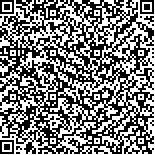| 杨 晔,王 洁,赵善斌,等.基于Kaiser模型的山西省肿瘤医院灾害脆弱性分析[J].中国肿瘤,2025,34(7):557-563. |
| 基于Kaiser模型的山西省肿瘤医院灾害脆弱性分析 |
| Disaster Vulnerability Analysis of Shanxi Provincial Cancer Hospital Based on Kaiser Model |
| 投稿时间:2025-03-21 |
| DOI:10.11735/j.issn.1004-0242.2025.07.A009 |
|
 |
| 中文关键词: Kaiser模型 肿瘤专科医院 国家区域医疗中心 灾害脆弱性分析 安全运营 |
| 英文关键词:Kaiser model specialized cancer hospital national regional medical centers disaster vulnerability analysis safety operation |
| 基金项目:2024年度山西省高质量发展研究课题(SXGZL202442) |
|
| 摘要点击次数: 42 |
| 全文下载次数: 19 |
| 中文摘要: |
| 摘 要:[目的] 分析山西省肿瘤医院潜在灾害与突发事件,为肿瘤专科医院加强应急管理提供数据支撑与理论依据。[方法] 基于Kaiser模型,全面罗列可能影响山西省肿瘤医院正常运行的因素,从自然灾害类、技术事故类、人员伤害类和危险品伤害类4个维度构建初始指标体系。经专家打分、权重赋予、筛选及名称修订,形成包含4个一级指标、34 个二级指标的评价体系。组织全院职工开展问卷调查,收集2020年236份、2024年430份有效问卷数据。分析各灾害危险事件发生的可能性、后果的严重性等指标。结合各指标权重,计算各灾害危险事件的相关风险值,并进行排序,对比两年数据以分析医院应急管理需加强的事项。[结果] 从一级指标维度分析,2020—2024年2次评价中,自然灾害类相关风险均值指标均排在首位,人员伤害均值排第2位,技术事故和危险品伤害相对靠后。从二级指标排序来看,2020年医院灾害危险事件相关风险值排名前3位依次为流行病爆发(20.39%)、地震(19.26%)、暴力性伤医(18.61%);2024年前3位依次为流行病爆发(15.65%)、地震(13.86%)、电梯故障(12.27%)。风险事件数据对比显示,流行病爆发始终位居相关风险值排名首位;暴力性伤医相关风险值从2020年18.61%降至2024年11.66%,医务人员职业暴露从18.03%降至11.51%,患者院内跌倒/坠落从17.05%降至11.28%,药品供应短缺从15.22%降至9.97%,均呈显著下降。电梯故障风险值虽下降26.4%,但排名从2020年第7位升至2024年第3位。 [结论] 医院应持续优化应急预案,如更换老旧电梯、提升网络安全预算、引入第三方调解平台等,进一步降低风险,持续推进平安医院建设。 |
| 英文摘要: |
| Abstract:[Purpose] To analyze potential disasters and emergencies in Shanxi Provincial Cancer Hospital, and provide data support for strengthening emergency management in specialized cancer hospitals. [Methods] Based on the Kaiser model, factors potentially affecting hospital operations were comprehensively listed, and an initial index system was constructed from 4 dimensions: natural disasters, technical accidents, personnel injuries, and hazards of dangerous goods. Through expert scoring, weight assignment, screening, and terminology revision, an evaluation system comprising 4 first-level indicators and 34 second-level indicators was developed. Questionnaire surveys were conducted among all hospital staff, yielding 236 valid responses in 2020 and 430 in 2024. Indicators such as the probability of occurrence and severity of consequences for each hazard event were analyzed. Combining indicator weights, relevant risk values for each hazard event were calculated, ranked, and compared across the two years to identify areas for emergency management improvement. [Results] From the first-level indicator dimension, the average risk values of natural disasters ranked the first in both 2020 and 2024 evaluations, with personnel injury risks ranking the second, while technical accidents and dangerous goods hazards were relatively lower. In terms of secondary indicators, the top three disaster risk events in 2020 were epidemic outbreak (20.39%), earthquake (19.26%), and violent attack on medical staff (18.61%), while in 2024, the top three were epidemic outbreak (15.65%), earthquake (13.86%), and elevator failure (12.27%). Risk event data comparison showed that epidemic outbreaks consistently ranked the first; violent attacks on medical staff decreased from 18.61% in 2020 to 11.66% in 2024, occupational exposure of medical staff from 18.03% to 11.51%, in-hospital patient falls/plummeting from 17.05% to 11.28%, and drug supply shortage from 15.22% to 9.97%, all with significant declines. Although the risk value of elevator failure decreased by 26.4%, its ranking rose from 7th in 2020 to 3rd in 2024. [Conclusion] The hospital should continuously optimize emergency plans, such as replacing aging elevators, increasing cybersecurity budgets, and introducing third-party mediation platforms, to further reduce risks and advance the Safe Hospital Initiative. |
|
在线阅读
查看全文 查看/发表评论 下载PDF阅读器 |